25 Nov 2022

Artists from a range of creative backgrounds received awards this year for their contribution to ngā toi Māori.
“Kia tupu te toi, kia ora te toi, kia whanake te toi, te toi i ahu mai i Hawaiki.” (Kīngi Tāwhiao)
We are thrilled to announce the 2022 winners of Ngā Taonga Toi a Te Waka Toi and commend them on their continued commitment and support to Ngā Toi Māori.
Te Komiti Māori co-chair Bonita Bigham says she is thrilled to celebrate the ‘rangatira in mahi toi’.
She said, “Despite some Māori artforms considered to be at crisis point, it’s important to celebrate the stalwarts who are committed to revitalising these artforms.”
“We’re now seeing increased engagement in the Māori arts community and an increased awareness of placing importance on making sure that we hold on to these precious taonga,” she continued.
The 36th annual Te Waka Toi awards will recognise and celebrate the artistic excellence and contribution of Māori artists working in customary and contemporary Māori arts on Saturday 26th November 2022 (7.00pm – 8.00pm) with a pre-recorded online event.
“We acknowledge our partners Te Papa Tongarewa, Te Taura Whiri i Te Reo and Te Matatini. Through their individual awards they have acknowledged Māori artists whose contribution to performing arts, Te Reo and mātauranga Māori is invaluable,” said Bonita.
Dame Robin White – Supreme Award winner
Veteran visual artist Dame Robin White received the Te Tohu Aroha mo Te Arikinui Te Ataairangi Kaahu for her lifelong contribution to the arts.
Hāniko Te Kurapa, Kaiwhakahaere o Te Kaupapa, Toi Aotearoa says this category is awarded to those who have made a significant impact on Māori arts. He adds that Dame Robin has not only done this here in Aotearoa but across the Pacific as well.
“Past winners include Rawiri Paratene, Robyn Kahukiwa and Patricia Grace. Dame Robin, like the winners before her, have spent years perfecting her craft and telling the stories that matter – and for that, I acknowledge her.”
Her career spans 50 years a selection of her notable artworks are on display in the touring retrospective exhibition, Te Whanaketanga:Something is Happening Here, currently on at the Auckland Art Gallery.
For Dame Robin, this success isn’t hers alone. She’s mindful of all who have contributed to her illustrious career. She received it on behalf of those who have helped her along the way.
“I am very conscious of the fact that it brings with it a heightened awareness of responsibility.”
For media queries please contact
Whatitiri Te Wake
whatitiri.tewake@creativenz.govt.nz
+64 21 2669728
Ngā Toi Whakaihuwaka 2022 | Winners
Te Tohu Aroha mō Te Arikinui Te Atairangikaahu Exemplary / Supreme Award
Dame Robin White (Ngāti Awa)
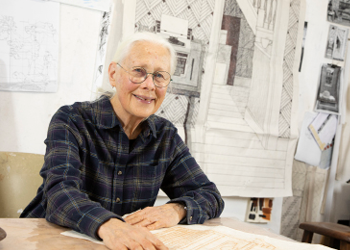 Robin White (born in Te Puke, 1946) was told by Colin McCahon that she needed to get out and paint instead of trying to stay at Auckland University’s Elam School of Fine Arts for a better qualification than her Diploma. So, she did. She attributes her confidence, determination and hard-work ethic to the stern encouragement of her parents, especially her father Albert Tikitu White with his very large kumara patch that needed a lot of attention. Her first steps on the road to a life of artmaking were encouraged by an art teacher at Epsom Girls Grammar School, May Smith, after early years at Raglan District High.
Robin White (born in Te Puke, 1946) was told by Colin McCahon that she needed to get out and paint instead of trying to stay at Auckland University’s Elam School of Fine Arts for a better qualification than her Diploma. So, she did. She attributes her confidence, determination and hard-work ethic to the stern encouragement of her parents, especially her father Albert Tikitu White with his very large kumara patch that needed a lot of attention. Her first steps on the road to a life of artmaking were encouraged by an art teacher at Epsom Girls Grammar School, May Smith, after early years at Raglan District High.
Robin’s brief career as an art teacher at Mana College soon morphed into full time work as an artist when she went to live on the Otago Peninsula and by 1972 Robin was becoming known as one of a group of New Zealand regionalists characterised as the hard-edged realists.
After a ten-year career as a distinctive painter and screen-print maker in New Zealand, Robin moved to Kiribati, where the different nature of the physical and social environment introduced some changes in the works that she produced from her studio beside the Tarawa lagoon. Robin is now based in the Wairarapa.
Robin’s works are currently exhibited at Te Papa. Something is happening Here is the first book to be devoted to Robin White’s art for 40 years.
Ngā Tohu a Tā Kingi Ihaka | Sir Kingi Ihaka Award/ Recognising lifetime contribution
Muriwai Ihakara (Ngāti Porou, Te Arawa)
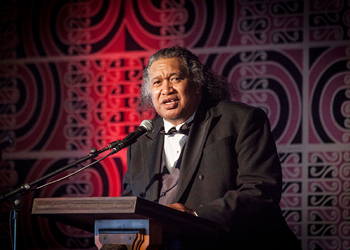 The late Muriwai Ihakara was raised in a Māori world where the oral arts were treasured, he had expertise and knowledge of the oral arts that were extraordinary. His whaikōrero was wondrous to behold; he would make connections between mana whenua and manuhiri and people listening would make the journey from polite attention to rapt engagement.
The late Muriwai Ihakara was raised in a Māori world where the oral arts were treasured, he had expertise and knowledge of the oral arts that were extraordinary. His whaikōrero was wondrous to behold; he would make connections between mana whenua and manuhiri and people listening would make the journey from polite attention to rapt engagement.
A great inspiration to many people, both Māori and Pākehā, Muriwai was one of those shy and introverted people who was also a fantastic performer, with massive mana. He led New Zealand’s Festival of Pacific Arts and Culture delegations, was the face of the Ngā Taonga Toi a Te Waka Toi Awards and fronted our tikanga at the Venice Art Biennale. He lifted the wairua of all occasions, with his strong connection with the ancient ways and the world of his ancestors.
Muriwai was a tohunga in the Te Ao Haka, leading kapa in Australia for many years before coming back home to Aotearoa to raise his whānau in Te Ao Māori. Muriwai was very staunch in terms of tikanga and Māori values. Manaakitanga and whānaungatanga were important to him and he ensured that these values were kept alive and implemented in our mahi at Toi Aotearoa. He was a beautiful mentor who had mana within our organisation, across the arts sector and within iwi circles. He taonga kua kapohia e te ringa o aitua. Moe mai rā e te rangatira.
Christina (Tina) Hurihia Wirihana (Ngāti Pikiao, Ngāti Maniapoto, Ngāti Raukawa, Ngāti Whawhakia, Tainui, Te Arawa, Ngāti Rangiunora)
 Christina is a highly respected senior weaver/artist, acclaimed in Aotearoa and internationally for her weaving which incorporates tradition and innovation.
Christina is a highly respected senior weaver/artist, acclaimed in Aotearoa and internationally for her weaving which incorporates tradition and innovation.
Born in 1949 in Rotorua, she first learnt rāranga at high school but credits her mother, Matekino Lawless (QSM) as her greatest teacher. Mother and daughter have an established relationship as weavers and good friends. Through their sharing of inter-generational expertise, this unique partnership has drawn much interest from both the local and global weaving communities.
Christina has a long-standing role as an educator being the first lecturer to teach rāranga at a tertiary level at Waiariki Institute of Technology, Rotorua in 1986, and has since taught at various institutes throughout the North Island.
Christina’s weaving explores the natural qualities of her materials and the inherent features of the weaving processes. Fibres such as houhi (lacebark), harakeke (flax), kiekie (climber) and pīngao (sedge) feature in her work along with natural dyes. Modern materials such as perspex and wire are sometimes incorporated whilst still respecting the traditional techniques of her tupuna.
Her work is held in collections both locally and abroad, including five kete whakairo in the British Museum and as part of an installation by the National Collective of Māori Weavers at the Headquarters of the United Nations.
Ngā Tohu Hautūtanga Auaha Toi – Making a Difference Award
Veranoa Hetet (Te Atiawa, Ngāti Tuwharetoa and Ngāti Maniapoto)
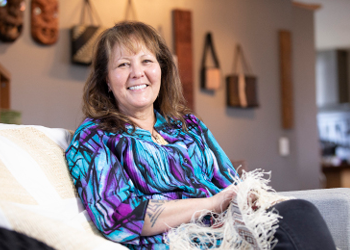 Veranoa Hetet was born in 1966 in Waiwhetū, Lower Hutt. She was taught how to weave her first kete when she was 13 years old by her mother Erenora Puketapu-Hetet. Her mother went on to teach her weaving techniques in rāranga, tāniko and whatu kakahu, and from her father, master carver, Rangi Hetet, she learnt tukutuku and kowhaiwhai. Several generations of the Hetet family have been practitioners and teachers of Māori weaving techniques, ever since Rangimārie Hetet composed a waiata asking her descendants to uphold these traditions.
Veranoa Hetet was born in 1966 in Waiwhetū, Lower Hutt. She was taught how to weave her first kete when she was 13 years old by her mother Erenora Puketapu-Hetet. Her mother went on to teach her weaving techniques in rāranga, tāniko and whatu kakahu, and from her father, master carver, Rangi Hetet, she learnt tukutuku and kowhaiwhai. Several generations of the Hetet family have been practitioners and teachers of Māori weaving techniques, ever since Rangimārie Hetet composed a waiata asking her descendants to uphold these traditions.
Since 1996 Veranoa has taught weaving at tertiary institutions such as Te Wananga o Raukawa, Wellington Polytechnic, Te Whānau Paneke, and The Open Polytechnic of New Zealand. She is based in Waiwhetū, Lower Hutt, where she teaches weaving online at the Hetet School of Māori Art started by her parents.
In 2012 Veranoa and her group of weavers, Te Roopu Mīro, were weavers in residence for the exhibition Kahu Ora at the Museum of New Zealand Te Papa Tongarewa. In a previous discussion with Awhina Tamarapa, the curator of Kuhu Ora, Hetet describes her passion for learning: ”Every time you learn a technique, it opens up the possibilities even more. So, the more you’re exposed to, the more possibilities there are for creating things.”
Ross Hemera (Ngai Tahu)
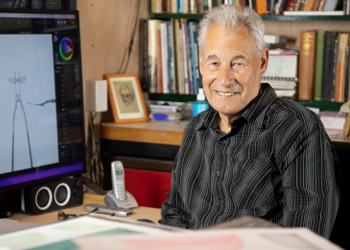 Ross’s creative works have drawn their inspiration from the unique landscape and culture of North Otago and the South Island of New Zealand. In particular, they reference the ancient rock drawings found in limestone caves and outcrops, created by his tīpuna, the nomadic Waitaha people. Ross’s work examines the inseparable relationship between the land and culture recalling the words of an old Waitaha saying: ‘In the silence of the rocks the spirit of the old inhabitants is still alive’.
Ross’s creative works have drawn their inspiration from the unique landscape and culture of North Otago and the South Island of New Zealand. In particular, they reference the ancient rock drawings found in limestone caves and outcrops, created by his tīpuna, the nomadic Waitaha people. Ross’s work examines the inseparable relationship between the land and culture recalling the words of an old Waitaha saying: ‘In the silence of the rocks the spirit of the old inhabitants is still alive’.
Ross has built up a practice that honours and reflects the cultural and artistic traditions of his iwi whilst incorporating European forms and materials. For Ross, a good knowledge of the significance and meaning behind the traditional designs he draws from is essential. Although the issues he addresses have broad relevance, his approach is deeply personal. “When I work, the things that are important to me are the things that are important to my family. Often it’s about the land, our relationship as people to the land.”
Ross is primarily known for his mixed media sculptures. He has undertaken several significant public commissions, including the Whakamarama sculpture at the entrance to the Māori section of the Museum of New Zealand/Te Papa Tongarewa, and his work has been exhibited internationally including in the Māori exhibition at the British Museum in London in 1998.
Gabrielle Belz (Ngāpuhi & Te Atiawa)
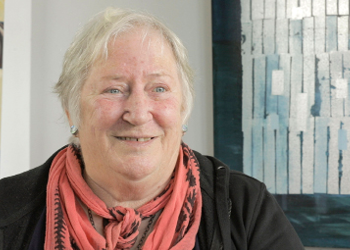 Gabrielle's work is about identity, history, and possible futures. Birds are used often as an element in her work. She has exhibited in New Zealand, and overseas being represented in private and public collections here and off-shore.
Gabrielle's work is about identity, history, and possible futures. Birds are used often as an element in her work. She has exhibited in New Zealand, and overseas being represented in private and public collections here and off-shore.
She considers herself fortunate to have been part of cultural exchanges in Samoa, Hawaii, Australia, Canada and the US and has been invited to, and held residencies at Pilchuck Glass Studios, Crows Shadow print studio on the Umatilla Reservation Oregon, Quay School of Arts Print Studio Whanganui, Toi Mairangi Arts School Hastings, Clatsop Community College in Astoria, and in 2015 selected for the new artist residency in the Hokianga.
Commission works include the entrance and paving features and inlays for the Māngere East Library, paving features in Glen Innes, mosaics in playgrounds around Manukau, glass feature walls for Te Wānanga o Aotearoa Māngere Campus, and more recently, feature walls for the East Entrance of Te Waonui o Mātauranga building in Manukau commissioned by Manukau Institute of Technology, completed June 2014.
Te Tohu Iho Pūmanawa Award - Recognising the contribution of a Māori artist with the lived experience of disability
Anaru Ruka (Ngāpuhi, Ngāti Raukawa, Ngāti Tuwharetoa)
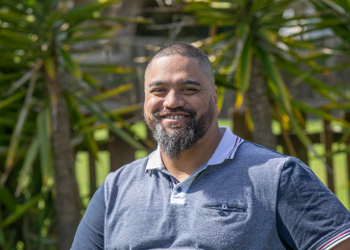 Every piece of work Anaru creates has been weaved and influenced by Whakapapa. Whether he is working on mere, taiaha, graphic design or a billboard, connecting the taonga to the recipient's journey and/or korero.
Every piece of work Anaru creates has been weaved and influenced by Whakapapa. Whether he is working on mere, taiaha, graphic design or a billboard, connecting the taonga to the recipient's journey and/or korero.
In the last three years, he has already contributed to his community in various ways. Including but not limited to holding art wananga for youth in collaboration with PATU Kaikohe and Kaikohe Future Leaders, member of Mahitahi Hauora Community. Anaru was commissioned to work on this art piece that supported the messaging of “He toka tūmoana e whati ana ngā ngaru o te tai”
Anaru has never allowed his disability to determine how far he walks in life. Breaking down any barrier that stands in his way. This award will support his growth even further and allow him to reach and inspire even more people.
Ahakoa nga uaua, kia toa, kia kaha kia manawanui.
When you find things in life are difficult, be strong, stand tall and be great of heart.
Ngā Manu Pīrere Award - Recognising emerging Māori artists.
Ngamako Rota (Waikato, Ngaati Mahuta)
 Ngamako is a graduate of Toi Whakaari and has acted and directed several plays including Te Whare Kapua, Whada you Reckon? She was lead in Romeo & Juliet and Women Beware Women. Rota says the concept of the film and theatre is to bring awareness and discussion to New Zealand stories.
Ngamako is a graduate of Toi Whakaari and has acted and directed several plays including Te Whare Kapua, Whada you Reckon? She was lead in Romeo & Juliet and Women Beware Women. Rota says the concept of the film and theatre is to bring awareness and discussion to New Zealand stories.
Rota was brought up in Huntly and attended Te Kura Kaupapa Māori ō Rākaumangamanga
Ming Ranginui (Te Ati Haunui-a-Pāpārangi)
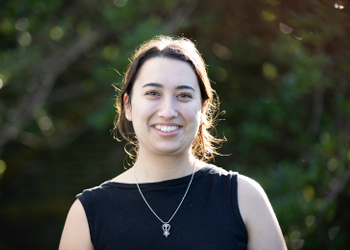 Ming studied at Massey University completing her Bachelor of Fine Arts in 2020. Ming’s latest exhibition at City Gallery Wellington Te Whare Toi, Matarau ringatoi (artist) is making things that are “pretty and impractical, but always impactful”.
Ming studied at Massey University completing her Bachelor of Fine Arts in 2020. Ming’s latest exhibition at City Gallery Wellington Te Whare Toi, Matarau ringatoi (artist) is making things that are “pretty and impractical, but always impactful”.
In a palette of pastel pinks and pale purples, Ranginui has reimagined a humble Daihatsu into a home in her latest piece, Angel Numbers on the Dash. Accompanying her “decked out Daihastsu” is an opulent satin sleeping bag commissioned for her most recent exhibition, Cruel Optimism: New Artist Show. The contemporary Māori artist says inspiration can come from all over the place but, in this case, she found hers closer to home. From an artistic family, Ranginui’s mother, Tia Ranginui, is a photographer who has also featured in Te Whare Toi.
p. Walters (Ngāti Kuri)
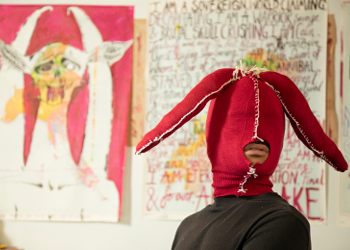 p. Walters is a 22-year-old emerging Māori artist whose work explores the effect of colonialism on indigeneity through subverting European and Christian imagery and text and reimagining it in a Māori context.
p. Walters is a 22-year-old emerging Māori artist whose work explores the effect of colonialism on indigeneity through subverting European and Christian imagery and text and reimagining it in a Māori context.
They make confronting and complex work inspired by artists and philosophers such as Tina Ngata, Robyn Kahukiwa, and Paul B Preciado. A graduate of Elam School of Fine Arts, they have quickly established an impressive track record, presenting work at The Lightship, Circuit, Artspace Aotearoa, Parasite Gallery, the Corban Estate, and the Pantograph Punch, and working with Tautai on their Fresh Horizons programme and Red Cross Tonga Relief fundraiser.
In describing their work, p.Walters says: “I choose to take pleasure in presenting the minute and monumental contradictions that compose ourselves, instead of aligning under one thesis, one ethos, one kaupapa, I choose to employ and honour and dishonour them all.”
Te Tohu o Te Papa Tongarewa Rongomaraeroa - Recognising outstanding contribution to Ngā Toi Māori. Funded and selected by Te Papa Tongarewa.
Hoturoa Barcley-Kerr (Tainui)
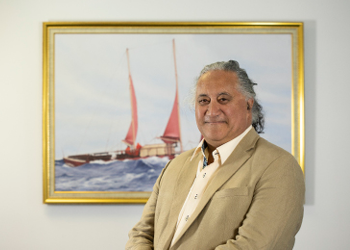 Hoturoa is the captain of the oceangoing waka Haunui. He is the son of Wharetoroa and Ngarungatapu Kerr, is married to Kim and has five children: Namaka, Turanga, Rangiiria, Noenoe and Hinemanu. Hoturoa has been sailing, around the Pacific for more than thirty-five years. He paddles waka, sails waka, teaches waka.
Hoturoa is the captain of the oceangoing waka Haunui. He is the son of Wharetoroa and Ngarungatapu Kerr, is married to Kim and has five children: Namaka, Turanga, Rangiiria, Noenoe and Hinemanu. Hoturoa has been sailing, around the Pacific for more than thirty-five years. He paddles waka, sails waka, teaches waka.
Hoturoa grew up with his numerous elders who nurtured and cared for him on the many marae of Waikato. He is a fluent Māori speaker and was educated at Onehunga High School and went on to study for a BA at the University of Auckland, and a Masters at Waikato University. His Master’s thesis investigated how the waka is a symbol of mana in the twenty-first century. He was a lecturer at Waikato University for over nineteen years. More recently he has specialised in education and leadership programmes that use the waka as a platform for learning and development.
Hoturoa is an orator on his marae at Kāwhia, the home of Haunui, and the ancient landing and settlement place of his ancestral waka, Tainui and his ancestor Hoturoa. He is a trustee on a number of trust boards and is currently the chairman of Taharoa C Incorporation, which administers and oversees the mining of iron sands on tribal lands.
Jack Thatcher (Ngāi Te Rangi, Ngāti Ranginui, Ngāti Porou, Te Aitanga-a-Hauiti)
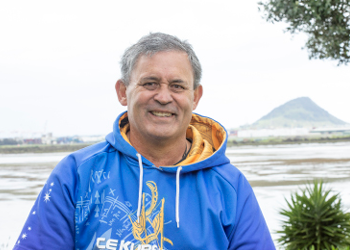 Jack is self-employed and manages the programmes of a small trust in Tauranga. As the trust’s event manager, Jack supports events based on traditional Māori activities such as waka kaupapa, mau rākau, kapa haka and cultural experiences. His main interest is in Māori traditional activity.
Jack is self-employed and manages the programmes of a small trust in Tauranga. As the trust’s event manager, Jack supports events based on traditional Māori activities such as waka kaupapa, mau rākau, kapa haka and cultural experiences. His main interest is in Māori traditional activity.
Jack was also one of the original voyagers who sailed on Te Aurere’s maiden voyage to Rarotonga in 1992. The history and stories of waka navigation in which Jack has been a part of is on display at the Kaupapa Waka | Manu rere moana exhibition currently on at Te Papa
Stanley Conrad (Te Aupouri)
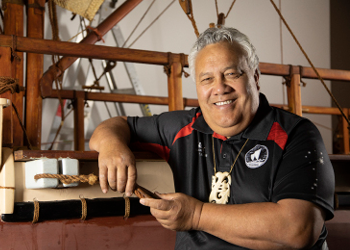 Stanley Conrad is one of the foremost captains of Māori ocean voyaging in the late-twentieth century and a leader in the retention and practice of mātauranga specific to waka hourua and waka taua.
Stanley Conrad is one of the foremost captains of Māori ocean voyaging in the late-twentieth century and a leader in the retention and practice of mātauranga specific to waka hourua and waka taua.
As kaihoe for the waka taua, Ngātokomatawhaorua, Stanley Conrad and Hekenukumai Busby were invited to participate in the 1985 Voyage of Discovery, a journey through the Pacific aboard the Hawaiian vessel, Hokule’a, intended to promote the ancestral practices of ocean voyaging and navigation techniques. Stanley and Hekenukumai joined the crew in Rarotonga for a sixteen-day journey, arriving in Waitangi on 8 December 1985.
At the workshop of Hekenukumai in Aurere in Doubtless Bay in 1991, Stanley contributed to the construction of the 17 m long double-hulled waka, Te Aurere. As the kaihautū of Aurere, Stanley has led numerous voyages across Moana Nui a Kiwa. Stanley is a Director of Te Tai Tokerau Tarai Waka Incorporated. Hekenukumai Ngā Iwi Trust and Arawai who are leading the development of the Kupe Waka Centre at Aurere, which will comprise three buildings including a wharewaka for Te Aurere, the Whare Whetū and a workshop for waka building.
Te Tohu aroha mō Ngoi Kumeroa Pewhairangi - Recognising outstanding work to strengthen Te Reo Rangatira. Funded and selected by Te Taura Whiri i te reo Māori.
Rob Ruha (Te Whānau-ā-Apanui, Ngāti Porou, Ngāti Rangiteaorere, Tūhourangi)
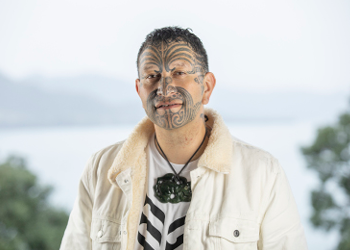 Rob is a product of powerful kapa haka traditions of song and indigeneity and in 2013, under the guidance and mentorship of Maisey Rika, began a career as a solo artist. Since then, Rob has collected a string of New Zealand Music awards and his unique style of music that he has coined ‘Haka-soul’ has been performed and embraced all around the world.
Rob is a product of powerful kapa haka traditions of song and indigeneity and in 2013, under the guidance and mentorship of Maisey Rika, began a career as a solo artist. Since then, Rob has collected a string of New Zealand Music awards and his unique style of music that he has coined ‘Haka-soul’ has been performed and embraced all around the world.
At the New Zealand Music Awards in 2014 and 2016, Rob took home the Tui for Best Māori Album. Rob has also taken home NZMA awards for Best Songwriter, Best Māori Song, Best Male Solo Artist (Waiata Māori Music Awards) and the prestigious APRA Maioha Award twice for his waiata ‘Kariri feat. Tiki Taane’ and ‘Tiki Tapu.’ In addition, Rob has won numerous kapa haka awards for his leadership, tutor roles and compositions beginning with his first national award at the age of 17 for Best Waiata Tira performed by Waihīrere Māori Club at the Aotearoa Traditional Māori Performing Arts Festival (now known as Te Matatini). Rob is also a talented weaver and painter and began learning these arts with his grandmothers from the age of seven.
In January 2020, Rob produced released a live album of gospel waiata in te Reo, sung supergroup Mōhau. The album won the Te Māngai Pāho Mana Reo Award and the Best Worship Artist Te Kaipuoro Kairangi Toa award at the 2020 Aotearoa Music Awards. In 2021, Rob produced Te Tai Rāwhiti choir Ka Hao released their debut single 35, which became a hit single in New Zealand, gaining popularity on TikTok during Te Wiki o te Reo Māori (Māori Language Week). Later that year, Rob released his third studio album, entitled Preservation of Scenery 35 and "Taera", a single from Preservation of Scenery, were two of the top 10 most commercially successful songs sung in Te Reo Māori for 2021.
In 2022, Rob worked as the co-musical director of The Lion King Reo Māori (2022), alongside Pere Wihongi.
Te Tohu a Te Matatini – Contribution to Te Matatini
Te Aroha Paenga (Ngāti Porou)
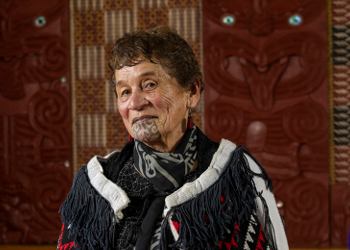 Te Aroha Paenga is an original life member of Te Matatini and is also of the Tāmaki Makaurau Senior Kapa Haka Society. She was a founding member and female leader of Te Roopū Manutaki for over 25 years. Under her leadership Te Roopū won 2 National titles (1975 & 1990)
Te Aroha Paenga is an original life member of Te Matatini and is also of the Tāmaki Makaurau Senior Kapa Haka Society. She was a founding member and female leader of Te Roopū Manutaki for over 25 years. Under her leadership Te Roopū won 2 National titles (1975 & 1990)
Retiring from performance in 1992 she became a regional and National Te Matatini judge for 24 consecutive years (1992 – 2015) She was instrumental in the Te Māori exhibition accompanying the taonga and training performers to represent Aotearoa.
She performed and led innovative waiata ā ringa Mīhini Ātea now recognised as a classic among Māoridom and featured on Te Matatini TM 50 Album, celebrating 50 years of national kapa haka competitions.
Te Aroha is a staunch advocate for for the revitilisation of Te Reo especially in the arts and education system where she worked for over 60 years.
Her contribution to Te Reo me ōna tikanga is undeniable through the creation and evolution of Hoani Waititi Marae. Te Aroha was a founding member of the marae, she was the first kaiako at Hoani Waititi Te Kohanga Reo and together with Katarina Mataira led the first Kura Kaupapa Māori School (1985)
Students nurtured through this kohanga, kura and wharekura (known as raukura) are now the current national champions – Ngā Tūmanako (2019), Te Wharekura o Hoani Waititi (2002, 2022)
In her humility, Te Aroha is happy to remain in the background and let the fruits of her labour speak for themselves.
Te Taepa Kameta (Ngāti Pikiao, Ngāti Te Rangiunuora, Taranaki, Te Whakatōhea)
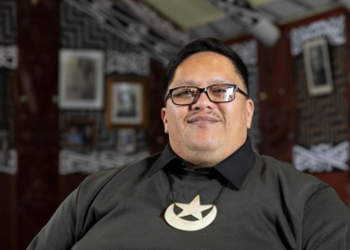 Te Taepa Kameta was introduced to curating Kapa Haka brackets for his whānau, marae and rohe from a very young age. He is currently the tutor for Te Reanga Morehu o Rātana.
Te Taepa Kameta was introduced to curating Kapa Haka brackets for his whānau, marae and rohe from a very young age. He is currently the tutor for Te Reanga Morehu o Rātana.
Te Taepa has a passion for singing and writing songs. He has composed some notable Māori classics like Te Atua and Te Arohanui – Te Arohanui later featured on Stan Walkers first Te Reo Māori album.
He credits his craft and teachings to the teachings of his elders from both Aotea Waka and Te Arawa.
CATEGORIES: Fellowships awards and residencies Latest news and blog



